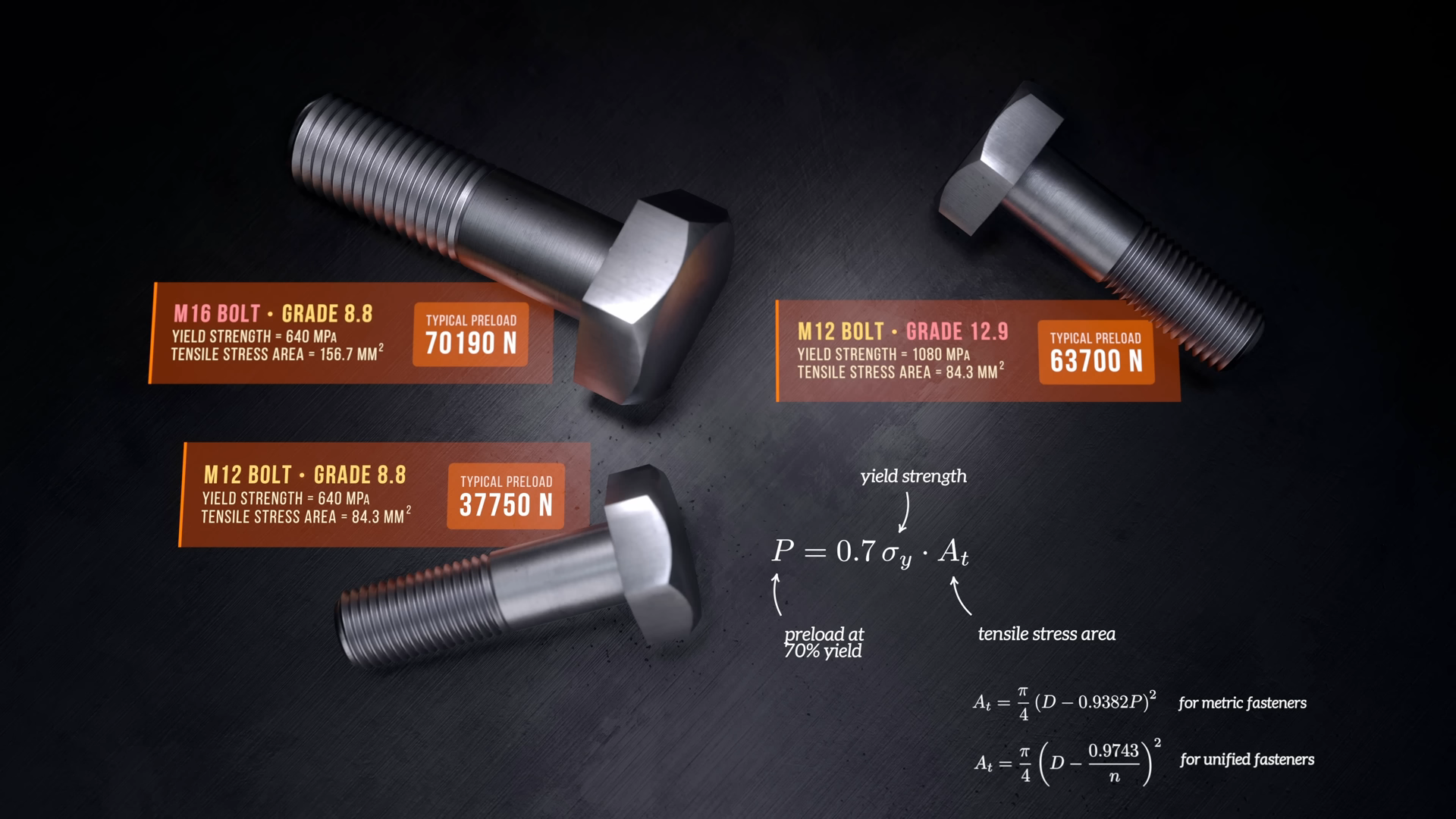
If you’re a mechanical engineer, the material covered in this video on the basics of bolted joints probably won’t cover any new ground. On the other hand, if you aren’t a mechanical engineer but still need to bring a little of that discipline to your projects, there’s a lot to learn here.
If there’s one takeaway lesson from [The Efficient Engineer]’s excellent examination of the strength of bolted joints, it’s the importance of preload. Preload is the tensile force created by tightening a bolt or a screw, which provides the clamping force that keeps the joined members together. That seems pretty self-obvious, but there’s more to the story, especially with joints that are subject to cycles or loading and unloading. Such joints tend to suffer from fatigue failure, but proper preloading on the bolts in such a joint mitigates fatigue failure because the bolts are only taking up a small fraction of the total cyclical force on the joint. In other words, make sure you pay attention to factory torque specs.
Speaking of torque, it was always a bit of a mystery to us how mechanical engineers specify torque. Luckily, [The Efficient Engineer] has an answer, and like most things in mechanical engineering, it boils down to the strength of materials. The rule of thumb is to apply enough torque to reach 70% of the yield strength of the bolt or screw, but there are plenty of variables to consider, including how the preload is measured. We picked up a couple of interesting tidbits in this department, like the use of ultrasonic inspection to determine how much a bolt stretches under preload, and the “turn-of-nut” method, which explains why some torquing procedures include adding an additional 30 or 40 degrees of rotation after reaching a specific torque. We also learned that the ISS docking system uses 16 motorized bolts to draw the joint between space station and spacecraft tight, and that each joint has a load cell to precisely measure the torque.
If you liked this look at nuts and bolts, you might want to check out the mechanism that makes them work.
Source: https://hackaday.com/2023/04/28/the-nuts-and-bolts-of-nuts-and-bolts/


